My Home Town: Stephen Frink
My Home Town – Key Largo isn’t my hometown in the literal sense. I grew up in Rock Island, Illinois, where the closest I was likely to get to an “in-water” experience was swimming laps, training for some upcoming swim meet. However, since 1978 home has been Key Largo, Florida Keys, where gratefully we have a lot more to see beneath the waves than was true in the Mississippi River of my youth.
The significant thing about Key Largo is geography and conservation. Geographically, Key Largo offers the benefit of a large land mass (hence the name: Largo = Large). This is meaningful in that it places a substantial physical barrier between the turbid water to the west from Florida Bay, and the crystalline waters to the east flowing north along the Gulf Stream. It was that serendipity that created the coral reefs that stunned and inspired John Pennekamp and Dr. Gilbert Voss back in 1960 when they championed the creation of John Pennekamp Coral Reef State Park. Further ecological protection ensued when the waters from the Florida state boundaries to the 200-foot depth were given federal protection with the creation of the Key Largo National Marine Sanctuary in 1975, later supplanted by the broader designation of the Florida Keys National Marine Sanctuary in 1990.
When I came to town there were massive fields of elkhorn and staghorn coral that I naively assumed would never go away. I wish today I could get in a time machine and go back to reefs like South Carysfort again to photograph those massive expanses of pristine corals. Many of those sites, 35 years on, are like E-6 slides that were improperly fixed and stored in high humidity … faded memories of a former grandeur. Yet, there are still some nice hard corals, and certainly the sponges are still doing well, particularly along the deeper ledges. And we have conservation initiatives in place to restore some of the corals we’ve lost, like the excellent work being done by Ken Nedimyer and his Coral Restoration Foundation. In addition, we now have what have grown to be spectacular shipwrecks in the Duane and Spiegel Grove, both intentionally sunk as dive attractions.
Admittedly the coral is in decline these days. Yet, what Key Largo has always done well it continues to do well … deliver fish. Big schools of grunt and goatfish and blue tang are common along these reefs, and colorful reef tropicals that are rare happenstance on many other Caribbean islands are common to the point of tedium along our reefs. Because of the long history of marine conservation, these fish do not associate underwater photographers with spearfishing, and are consequently much easier to approach.
That’s why I’ve chosen Key Largo for my annual Digital Masters Seminars. Fellow Canon Explorer of Light and Photoshop Hall of Fame member, Eddie Tapp, joins me every summer for one week classes celebrating the photo-ops of Key Largo. There is always something fascinating to photograph, no matter what lens is mounted.
For underwater photographers, Key Largo is a rare gem, on the right day. You can get your butt kicked when the wind blows, for not only does it create surge along the shallow reefs, but it steps on the visibility as well by kicking sand into suspension. To have a high probability of catching Key Largo in calm conditions, visit between late May through October. Unless, of course, a hurricane chooses to make a call, but you’ll know that a week ahead by watching the Weather Channel.
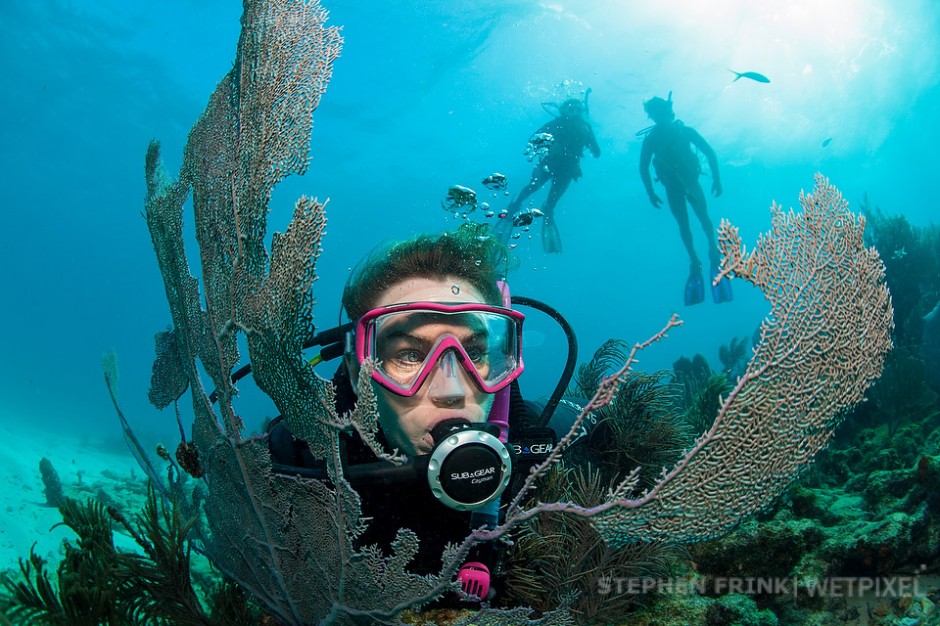
Commercial photo shoot for Subgear, Civil War Wreck.
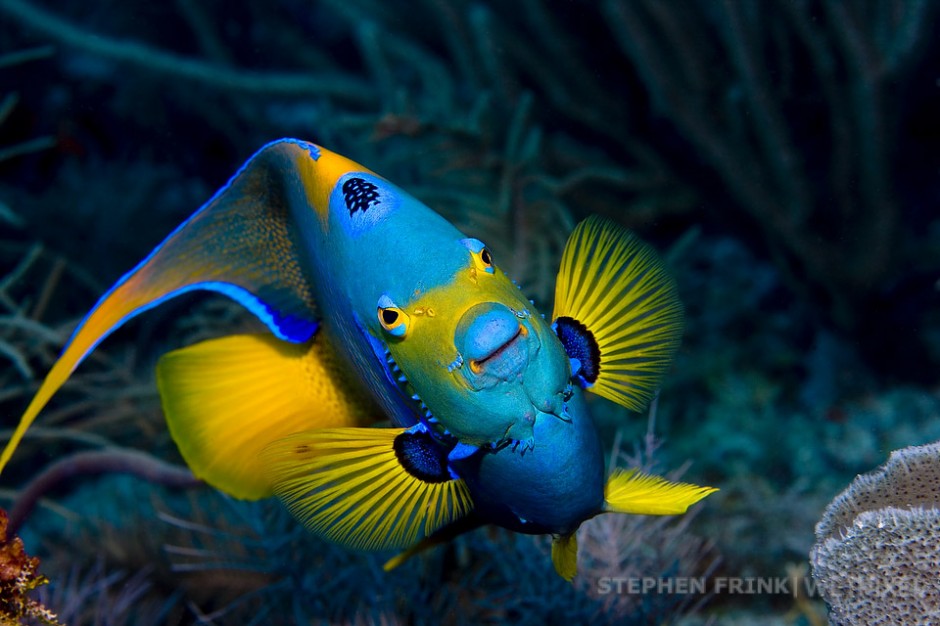
Queen angelfish (Holacanthus ciliaris), Molasses Reef
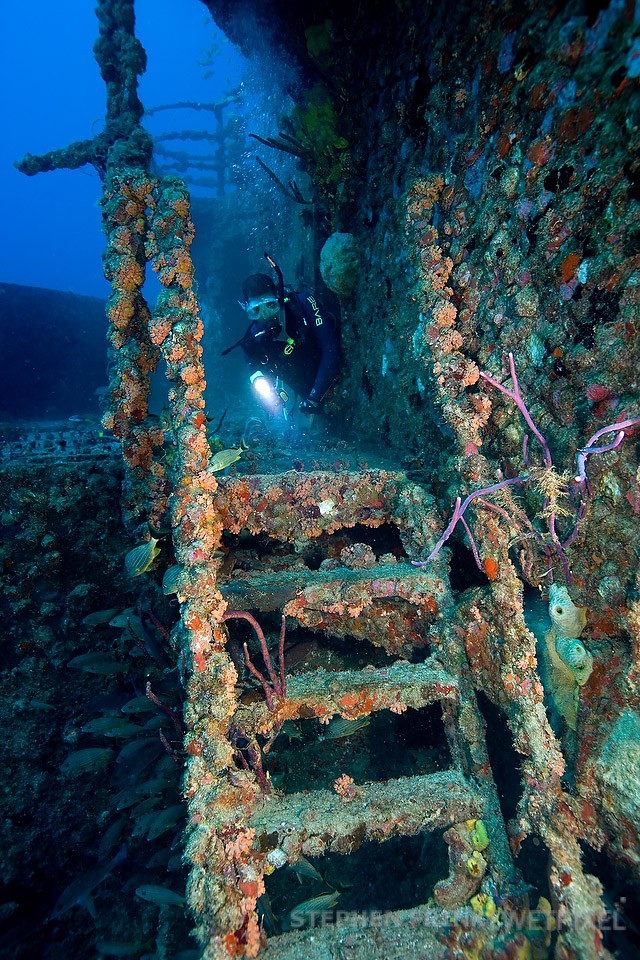
Diver swimming towards port stairs leading to wheelhouse, Duane shipwreck.
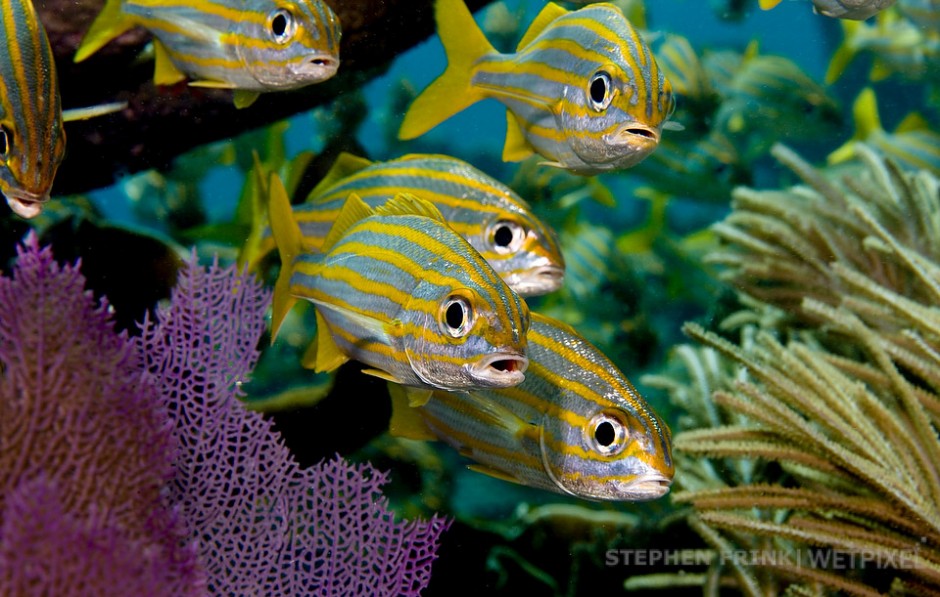
Smallmouth grunts (Haemulon chrysargyreum), Molasses Reef.
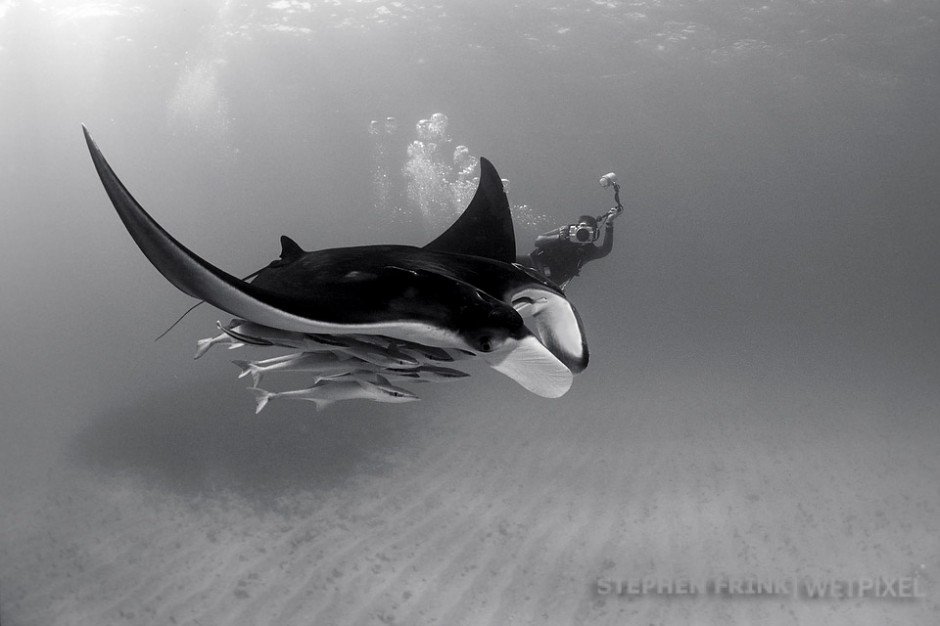
Manta ray (Manta birostris) and underwater photographer, Key Largo Dry Rocks
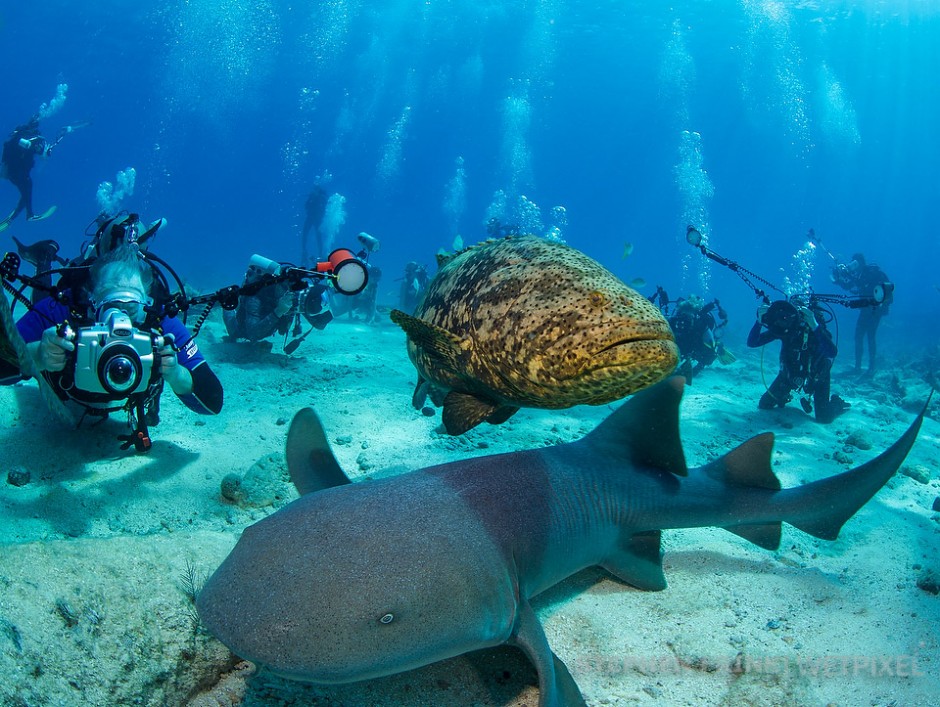
Photo frenzy, with nurse shark (Ginglymostoma cirratum) and goliath grouper (Epinephelus itajara), City of Washington Wreck
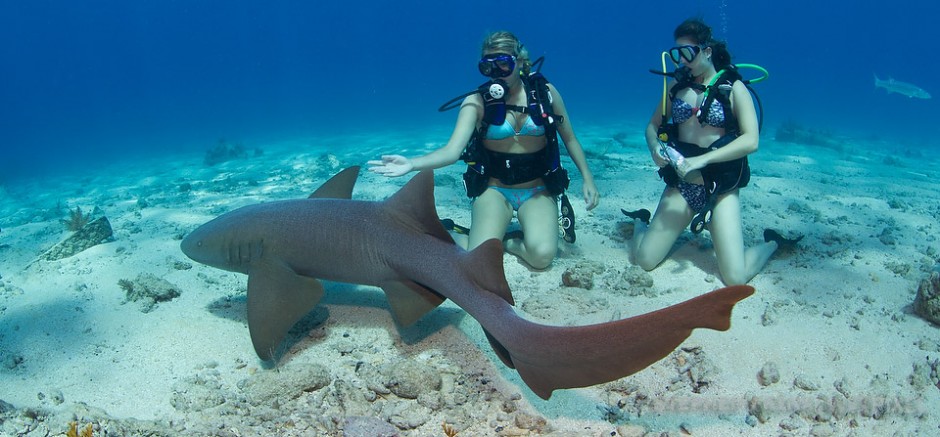
Divers and nurse shark (Ginglymostoma cirratum), City of Washington shipwreck
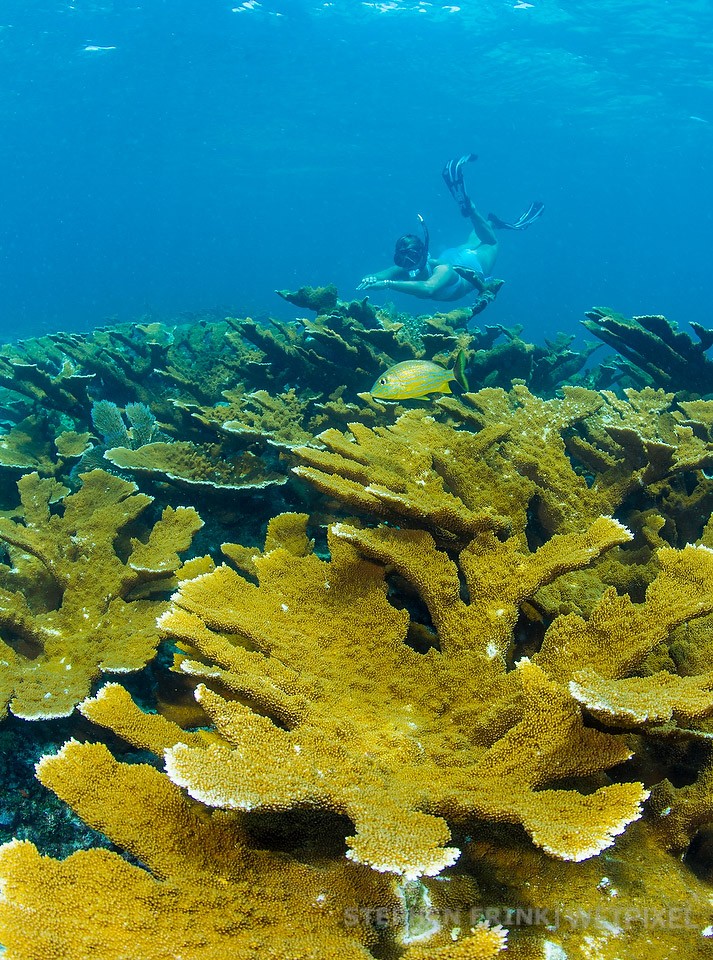
Elkhorn coral, Horseshoe Reef
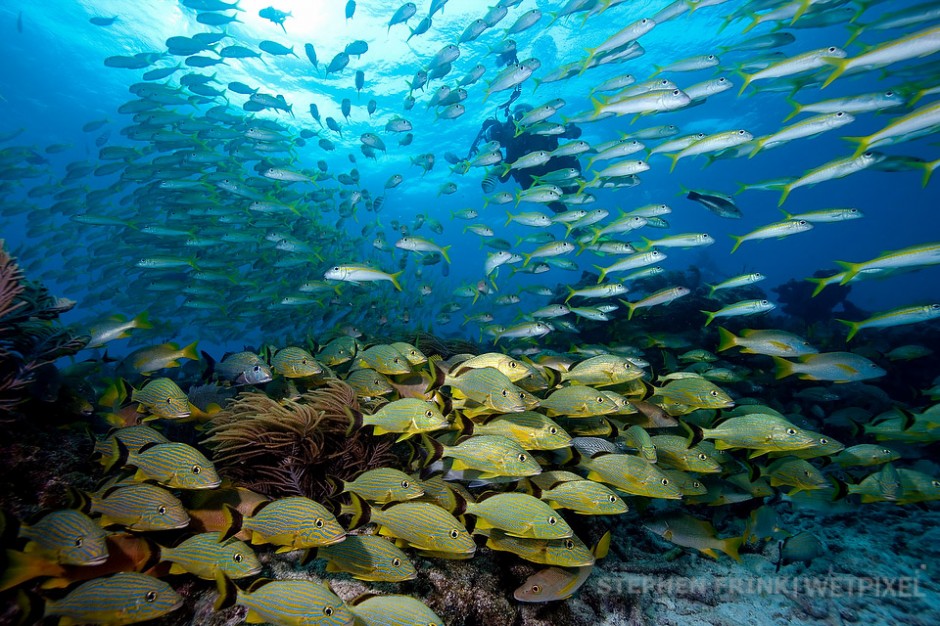
Schooling grunts and goatfish, Snapper Ledge.
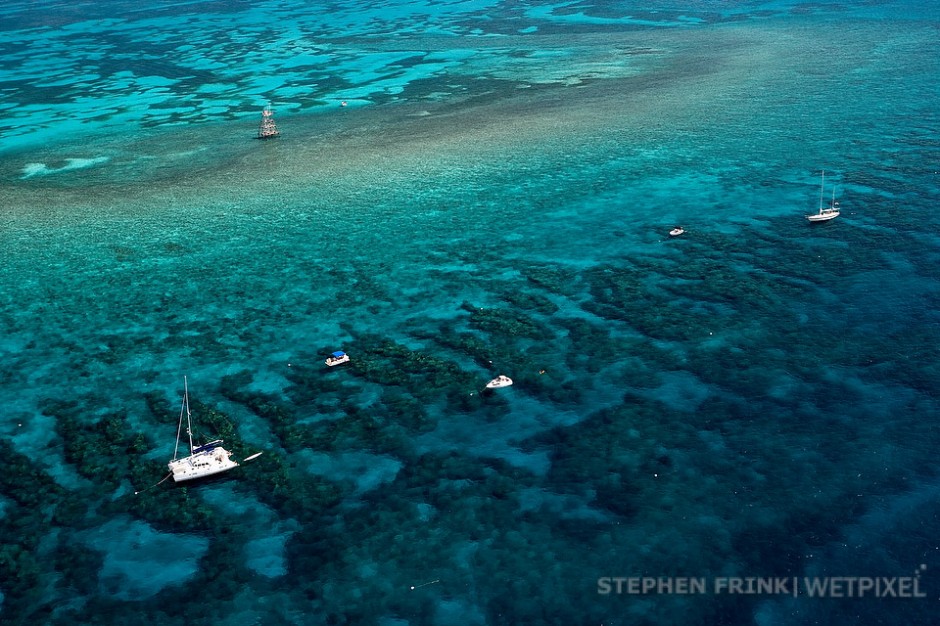
Molasses Reef aerial.
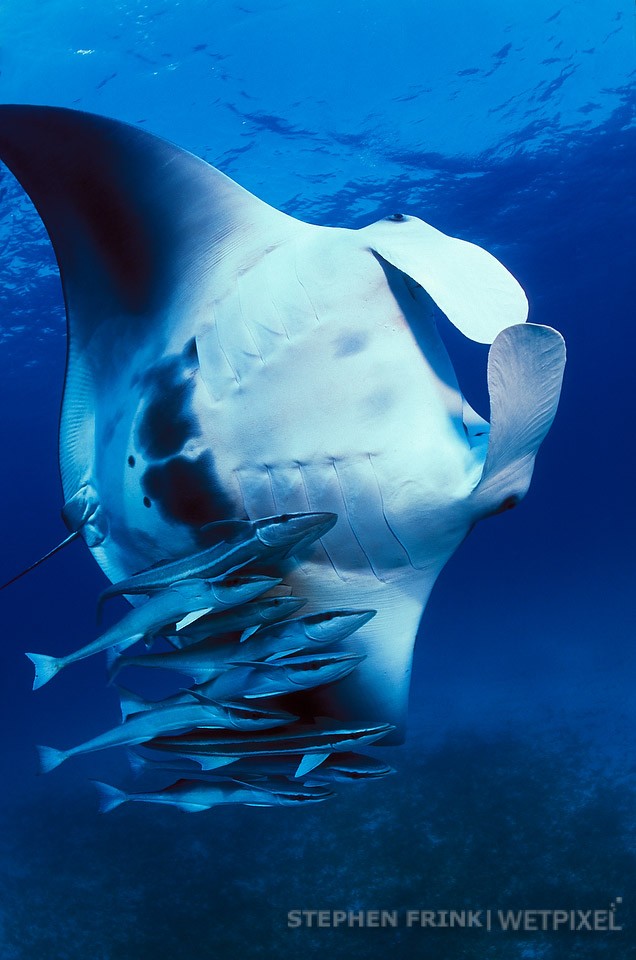
Manta ray (Manta birostris), Key Largo Dry Rocks
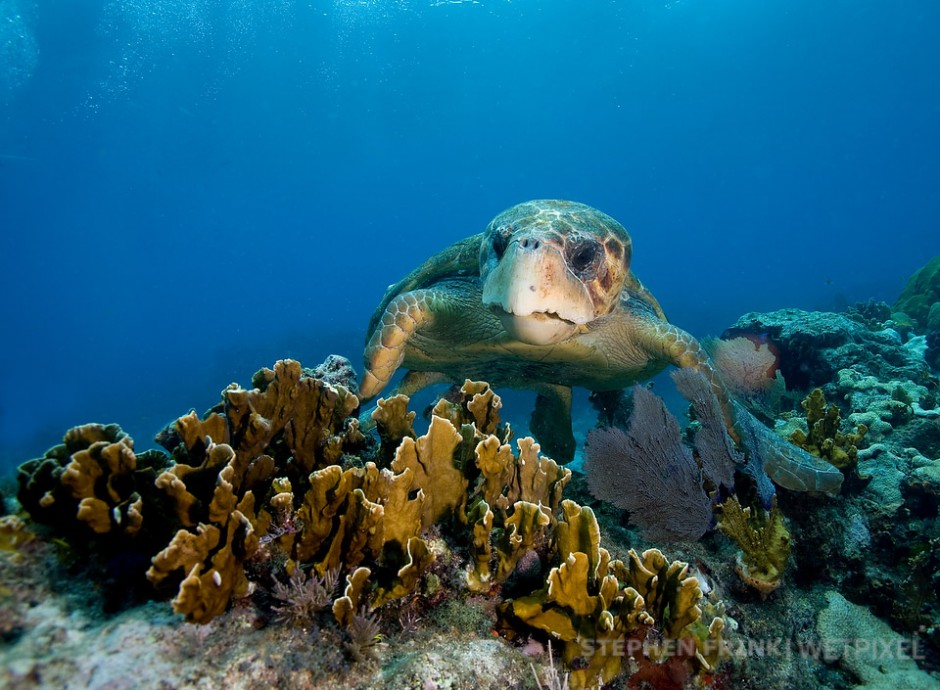
Loggerhead turtle (Caretta caretta), Molasses Reef.
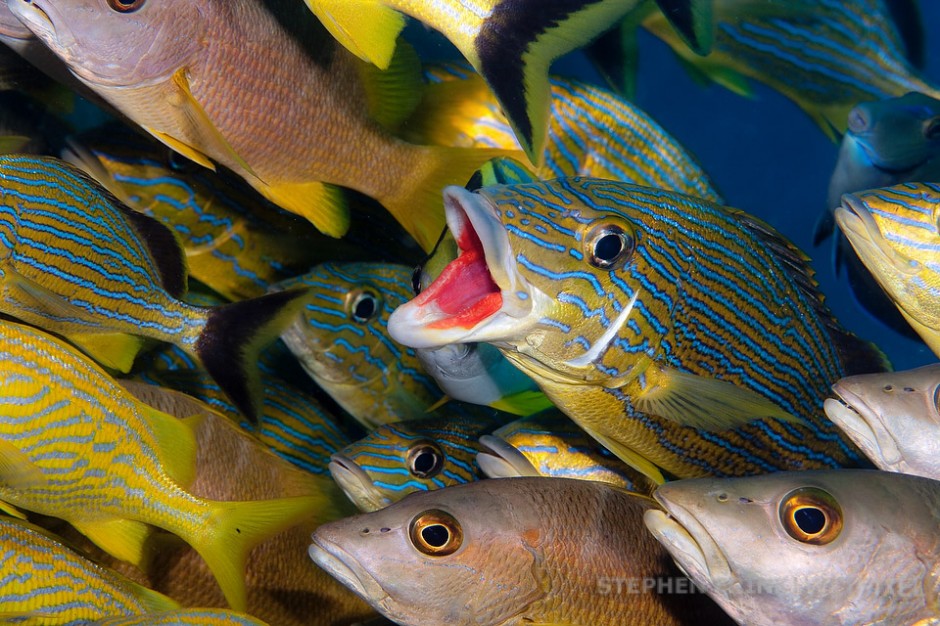
Blue-striped grunt (Haemulon sciurus), Snapper ledge.
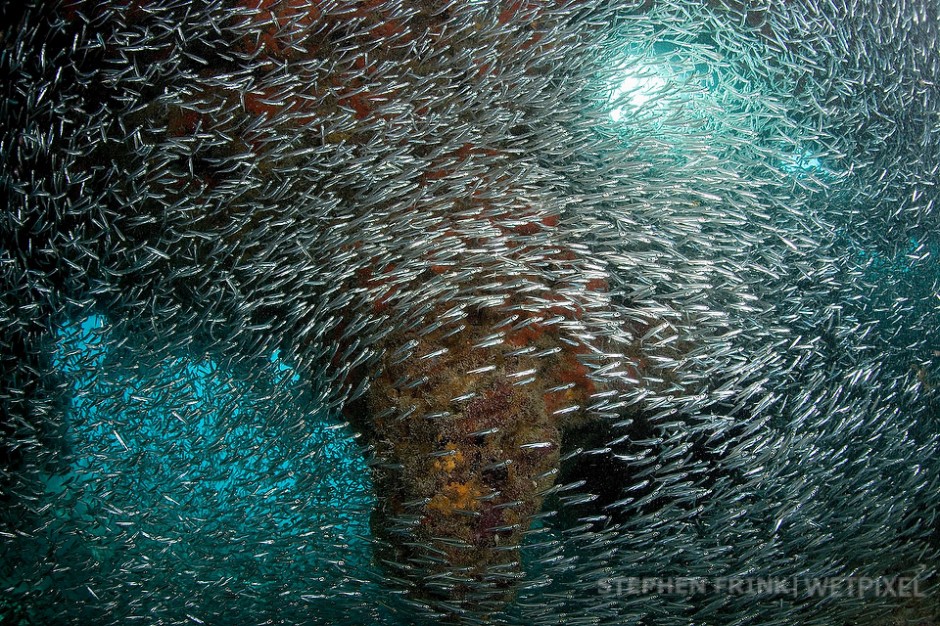
Glass minnows, Minnow Caves.
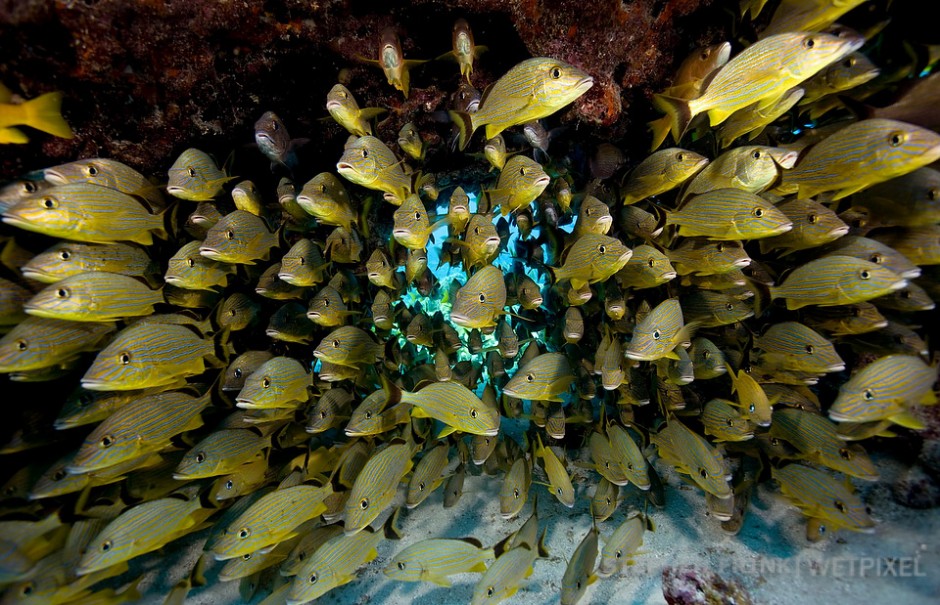
Blue-striped grunts (Haemulon sciurus), Snapper Ledge.
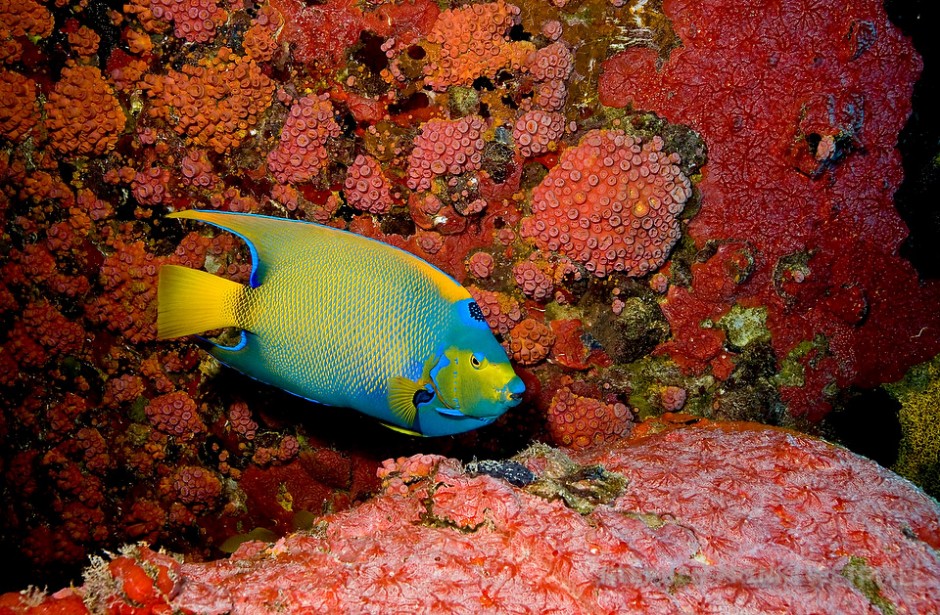
Queen angelfish (Holacanthus ciliaris), Aquarius habitat
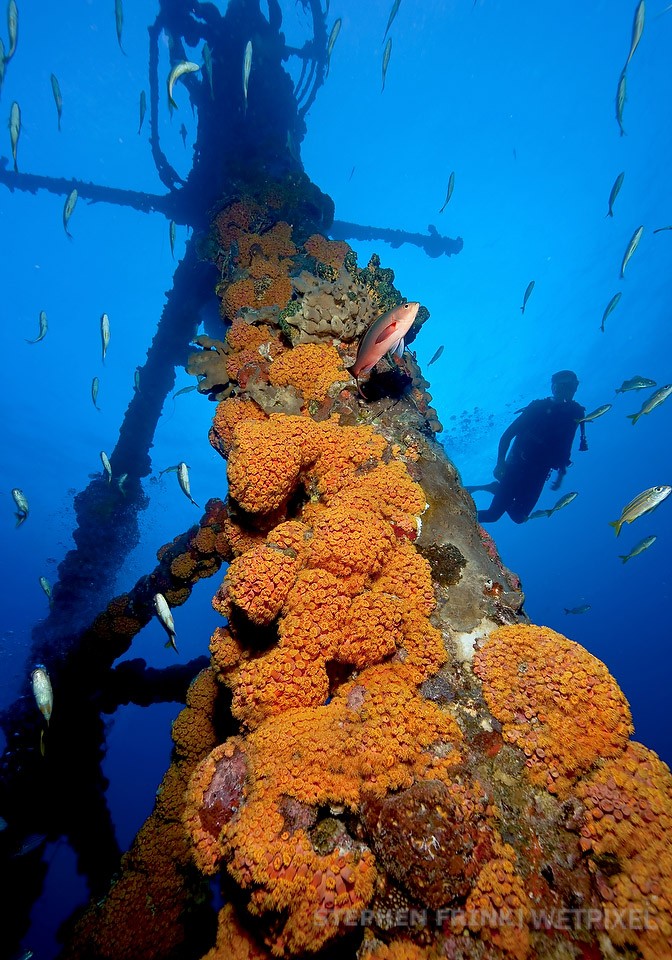
Radar tower, Duane Shipwreck.
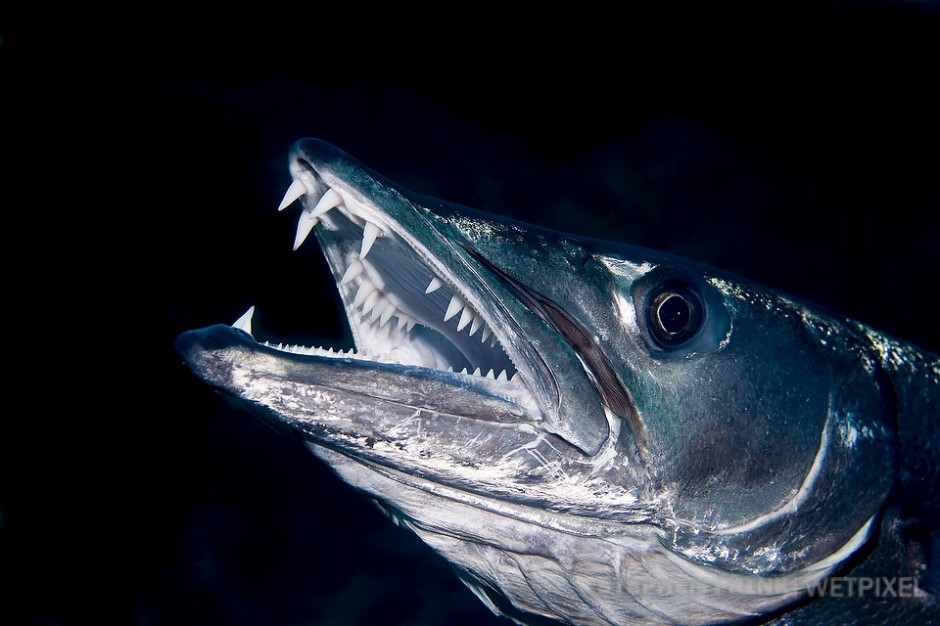
Barracuda (Sphyraena barracuda), Pickles Reef
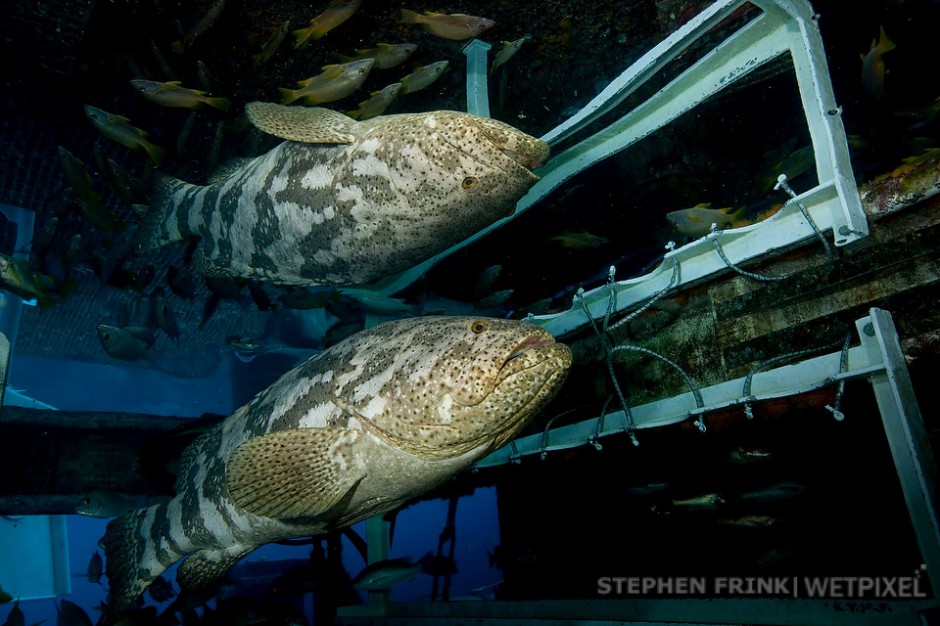
Goliath grouper (Epinephelus itajara), Aquarius Habitat